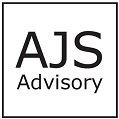How to Predict and Manage Your Cashflows Better
A NZ economy growth rate that continues to look good internationally that record numbers of migrants want to be part of, solid employment numbers, and a property market that continues to set new highs, suggests that all may be going well for Small Business New Zealand.
But stop for a minute, and ask yourself… despite all this apparent good news, is the cashflow of your business invariably coming up short whenever:
-you’ve got a larger than usual payment like tax, an asset purchase, or a one off loan repayment? or:
-you’ve stepped your business cost structure up a tier to get better economies of scale, or just to meet a seasonal upturn in demand – for example, extra debt servicing, staff, stock, marketing, rent of larger premises etc? or:
-a seasonal trough or an economic downturn in your industry causes a falloff in sales and / or an increase in the time needed to collect your debts?
Cash is, without a doubt, King. In my experience, if your business is underperforming even though it’s making good profits, the chances are that it’s not got an effective cashflow management system. So, if you’ve got room for improvement, read on:
First, you need to have a clear Business Plan. That’s because your forecast is simply a conversion of your Plan into numbers ie: where you are now, where you want to get to, how you’re going to get there, and what are the key milestones along the way.
Beware if you don’t have a cashflow forecast that’s written down. Without that you’ve got nothing solid to challenge yourself to work a bit smarter towards, nothing written down that you can honestly measure your actual performance against, and nothing concrete to base your future changes on.
Base your forecast on the key variables that drive each area within your business. For example, factor in variables like labour hours, productivity rates, timing of debtor collections, hourly rates and hourly costs, if yours is a service business based on selling time. If your business is based on selling product, variables include product unit costs, volumes and prices, stock loss and margins. If it’s based on vehicle or machine useage, include kms travelled or productive hours. And if you’re a manufacturer or a business selling a combination of time and materials, then you’ll need to factor in an appropriate combination of these variables.
Choose the forecast periods appropriate to your circumstances – like:
Short term – monthly for at least the next 12 months
Long term – covering the next 5 to 10 years. This should address longer term goals that may include a target date for full debt repayment, or a target date and amount for a business sale.
Be honest with yourself. How achievable are your forecast margins? How prudently are you forecasting sales? How realistic are your forecasted larger irregular payments like tax?
Your optimum end product should be an integrated computerised model that can be “flexed” to highlight:
The various combinations of key variable levels needed to breakeven.
How very small changes in each key variable can produce quite significant profit changes.
Period end balances for working capital, bank balances and unused credit facilities based on any combination of key variables and assumptions.
“Best case” and “worst case” scenarios
Forecast profit or loss for bank reporting purposes
Whether or not additional funding will be needed well before it’s needed. Businesses that fail are more often than not profitable – it’s simply been their poor cash management practices that’s caused them to run out of cash.
Periodically (usually monthly) review your forecast against your actual performance and Business Plan, then make amendments as needed. Of course, if you haven’t been measuring actuals for each key variable in your forecast, I certainly suggest that you start now.
If you haven’t already scheduled dates to do this as part of committing to a system of periodic board level meetings for your business, preferably with outside input, do it now. This applies irrespective of your size. Make yourself fully accountable for your business. Adopt sound cashflow management practices that have stood the test of time…and put yourself in the best position to get more out of your business!


